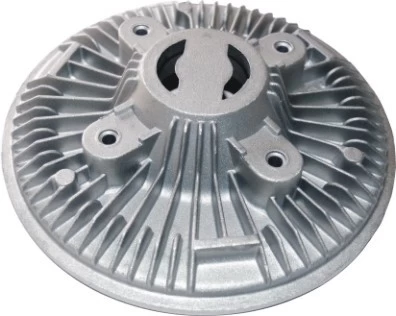Defects and prevention of aluminum die-casting
one. Flow marks and patterns
Visual inspection: There are stripes on the surface of the casting that are consistent with the flow direction of the molten metal, and there are clearly visible lines with the metal matrix.
Non-directional lines with different colors, no development trend.
1. The causes of flow marks are as follows:
(1) The mold temperature is too low.
(2) Poor runner design and poor position of the inner gate.
(3) The material temperature is too low.
(4) The filling speed is low and the filling time is short.
(5) The pouring system is unreasonable.
(6) Poor exhaust.
(7) The spray is unreasonable.
2. The reason for the pattern is that the paint in the cavity is sprayed too much or the quality of the paint is poor. The solutions and prevention methods are as follows
Down:
(1) Adjust the cross-sectional area or position of the inner runner.
(2) Increase the mold temperature.
(3) Adjust the speed and pressure of the inner runner.
(4) Appropriate selection of paint and adjustment of dosage.
two. Reticulated wing (crack of tortoise)
Appearance inspection: the surface of the die-casting parts has traces of raised or recessed net-like hairs, which will not change with the increase of the number of die-castings.
Break expansion and extension.
The reasons are as follows:
(1) There are cracks on the surface of the die-casting cavity.
(2) The preheating of the die-casting mold is uneven.
The solutions and prevention methods are:
(1) The die-casting mold should be annealed regularly or after a certain number of die-casting to eliminate the stress in the cavity.
(2) If a tortoise crack has appeared on the surface of the cavity, the molding surface should be polished to remove the crack layer.
(3) Preheat the mold evenly.

three. Cold barrier
Appearance inspection: There are obvious, irregular, and sinking linear patterns on the surface of the die-casting parts (both penetrating and non-penetrating)
Species) The shape is small and long and narrow, and sometimes the junction edge is smooth, and it may be disconnected under the action of external force.
The reasons are as follows:
(1) The two metal streams are connected to each other, but they are not completely fused and there are no inclusions in between. The bonding force of the two metals
It is also very weak; (2) The pouring temperature or the temperature of the die-casting mold is too low;
(3) The runner position is wrong or the flow path is too long;
(4) The filling speed is low.
The solutions and prevention methods are:
(1) Appropriately increase the pouring temperature;
(2) Improve the injection ratio and compress the filling time to increase the injection speed.
(3) Improve exhaust and filling conditions.
Four. Shrinkage (dent)
Visual inspection: There are smooth dents (like discs) on the most thick surface of the die casting.
The reasons are as follows:
(1) Caused by contraction
1.1 Improper design of die castings with too large wall thickness difference;
1.2 Improper runner position;
1.3 The injection pressure is low and the pressure holding time is short;
1.4 The local temperature of the die-casting mold is too high.
(2) The design of the cooling system is unreasonable;
(3) Mold opening is too early;
(4) The pouring temperature is too high.
The solutions and prevention methods are:
(1) The wall thickness should be uniform;
(2) The thickness transition should be eased;
(3) Correctly select the alloy liquid introduction position and increase the cross-sectional area of the inner runner; (4) Increase the injection pressure and extend the protection
Pressure time
(5) Appropriately reduce the pouring temperature and the temperature of the die-casting mold;
(6) Partially cool the local high temperature;
(7) Improve overflow conditions;



















